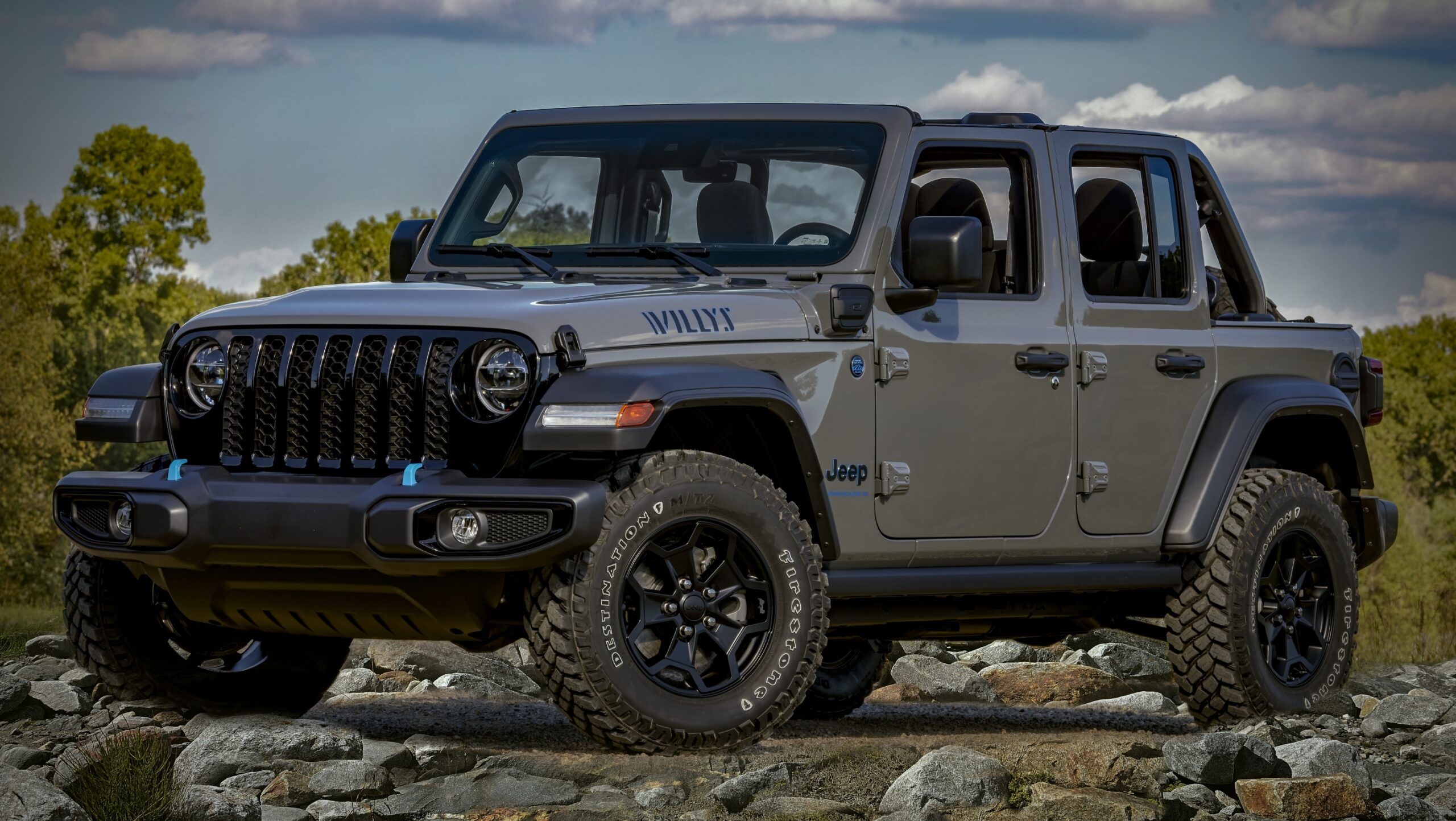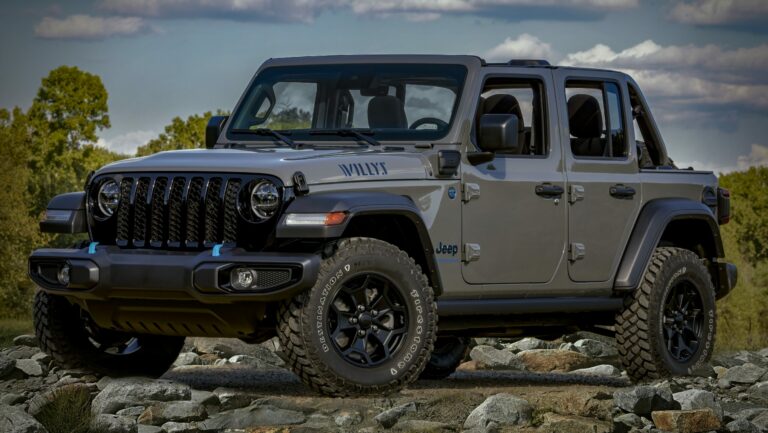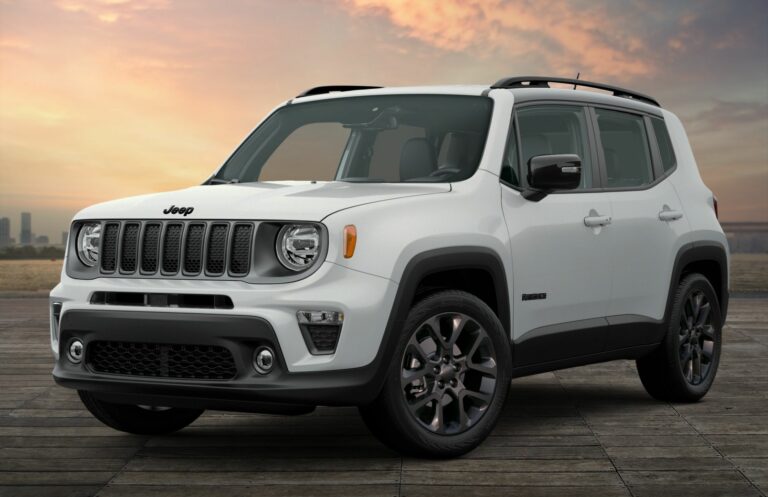Navigating the Market for a Classic Jeep CJ: What to Know When Looking for a ‘CJ-4’ and Beyond
Navigating the Market for a Classic Jeep CJ: What to Know When Looking for a ‘CJ-4’ and Beyond jeeps.truckstrend.com
The allure of a vintage Jeep CJ is undeniable. These rugged, iconic vehicles represent a bygone era of pure, unadulterated off-roading and a timeless connection to American automotive history. For many enthusiasts, owning a classic CJ isn’t just about driving; it’s about a lifestyle, a statement, and a journey back to the roots of adventure.
When the search begins for one of these legendary machines, terms like "Jeep CJ for sale" frequently pop up. However, if you find yourself specifically searching for a "Jeep CJ-4 for sale," it’s important to clarify a common misconception right from the start. Jeep never officially produced a model designated as the "CJ-4" for public sale. The Civilian Jeep (CJ) lineage progressed from the CJ-2A, CJ-3A, and CJ-3B directly to the wildly popular CJ-5, followed by the CJ-6, CJ-7, and CJ-8 (Scrambler).
Navigating the Market for a Classic Jeep CJ: What to Know When Looking for a ‘CJ-4’ and Beyond
It’s possible that the term "CJ-4" might be used informally to refer to a very early CJ model, a rare prototype that never reached mass production, or simply be a misunderstanding of the chronological numbering. Regardless, this article will serve as a comprehensive guide for anyone looking to purchase a classic Jeep CJ, focusing on the widely recognized and available models that truly embody the spirit you’re likely seeking. We’ll delve into everything you need to know, from understanding the different generations to inspecting a potential purchase and navigating the market for these enduring legends.
The Enduring Legacy of the Jeep CJ Series (And Where the ‘CJ-4’ Fits In… or Doesn’t)
The Civilian Jeep, or CJ, traces its lineage directly back to the Willys MB, the ubiquitous military vehicle of World War II. After the war, Willys-Overland saw a civilian market for the rugged utility vehicle, leading to the birth of the CJ series.
- CJ-2A (1945-1949): The first true civilian Jeep, affectionately known as the "Universal Jeep."
- CJ-3A (1949-1953): Minor updates, including a one-piece windshield.
- CJ-3B (1953-1968): Featured a taller hood ("high-hood") to accommodate the new F-head engine. This was the last "flat-fender" CJ.
- CJ-5 (1955-1983): A significant redesign, based on the Korean War M38A1 military Jeep. It became the longest-produced CJ model.
- CJ-6 (1955-1981): A stretched version of the CJ-5, offering more cargo space.
- CJ-7 (1976-1986): A wider and slightly longer evolution of the CJ-5/6, designed to accommodate automatic transmissions and provide more interior room. This is often considered the most "modern" of the classic CJs.
- CJ-8 Scrambler (1981-1986): A pickup truck version of the CJ-7, highly sought after today due to its rarity.

As you can see, the numbering sequence directly jumps from CJ-3B to CJ-5. There was no official, mass-produced "CJ-4." If you encounter someone selling a "CJ-4," it’s crucial to ask for clarification and verify the vehicle’s true model designation, as it’s almost certainly one of the established CJ models.

Why Invest in a Vintage Jeep CJ?
The reasons to buy a classic CJ go beyond mere transportation:
- Iconic Design & Heritage: From its distinctive seven-slot grille to its exposed hinges and rugged stance, the CJ is instantly recognizable. Owning one means owning a piece of automotive Americana.
- Unmatched Off-Road Capability: Simple, robust, and lightweight, CJs are legendary for their off-road prowess. Their solid axles, short wheelbases (on most models), and excellent approach/departure angles make them incredibly capable on trails.
- Customization Potential: The aftermarket for CJs is immense. From lift kits and larger tires to engine swaps and body modifications, you can truly make a CJ your own.
- Community & Collectibility: There’s a vibrant, passionate community of CJ owners and enthusiasts. Furthermore, well-maintained or restored CJs, especially rarer models like the Scrambler, can appreciate in value.
- Raw Driving Experience: Unlike modern vehicles, a vintage CJ offers a visceral, connected driving experience. You feel the road, hear the engine, and truly participate in the act of driving.

Key Considerations When Buying a Classic CJ
Purchasing a vintage vehicle, especially an off-road icon, requires careful consideration. Here’s what to scrutinize:
- Rust: The Number One Enemy: CJs are notorious for rust. Thoroughly inspect the frame (especially near spring hangers, skid plates, and body mounts), body tub (floorboards, rocker panels, rear wheel wells), fenders, and tailgate. Surface rust is manageable, but extensive frame rot or body perforation can be a deal-breaker or require costly repairs.
- Engine & Drivetrain Health: Inquire about the engine’s history. Does it smoke? Are there excessive leaks? Listen for unusual noises. Check the transmission for smooth shifting (manual) or proper engagement (automatic). Test the transfer case to ensure 4WD engages correctly. Many CJs have had engine swaps; assess the quality of the swap.
- Frame Integrity: Look for bends, cracks, or poorly executed repairs. A compromised frame is a major structural issue.
- Suspension & Steering: Check for worn leaf springs (saggy or bent), worn bushings, and excessive play in the steering. "Death wobble" (a violent shaking of the front end) is a common issue that can be caused by various worn components.
- Electrical System: Original CJ wiring can be brittle and problematic. Look for shoddy wiring jobs or evidence of amateur repairs. Ensure all lights, gauges, and accessories work.
- Modifications: Many CJs are modified. Evaluate the quality of lift kits, aftermarket bumpers, winches, or engine/axle swaps. A poorly executed modification can cause more problems than it solves.
- Documentation: A clear title is essential. Any service records, past ownership history, or build receipts add value and provide insight into the vehicle’s past.
Where to Find Your Next Classic CJ
Finding the right CJ takes patience and knowing where to look:
- Online Marketplaces: Craigslist, Facebook Marketplace, eBay Motors, and general classified sites are common starting points. Be wary of scams and always verify information.
- Specialty Forums & Enthusiast Groups: Websites like "JeepForum.com" or dedicated Facebook groups for CJ enthusiasts often have "for sale" sections. Sellers here are usually more knowledgeable, and buyers can tap into community advice.
- Classic Car Dealerships & Auction Houses: These venues often offer higher-quality, often restored, vehicles. Prices will be higher, but you might gain a level of vetting and professionalism.
- Local Classifieds & Word of Mouth: Don’t underestimate the power of local listings or simply asking around. Some of the best finds are not widely advertised.
The Purchase Process: From Inspection to Ownership
- Initial Screening: Engage the seller with specific questions about rust, mechanical condition, and any known issues. Request numerous detailed photos, especially of common rust areas.
- In-Person Inspection: If the initial screening goes well, arrange an in-person viewing. Bring a checklist. Look under the vehicle with a flashlight. Bounce the suspension, open and close doors, check all lights.
- Test Drive: Listen for engine noises, feel for transmission shifts, test the brakes, and ensure the steering is responsive. If possible, test the 4WD system on a safe, unpaved surface.
- Professional Pre-Purchase Inspection (PPI): For a significant investment, especially if buying from out of state, a PPI by a trusted mechanic familiar with older Jeeps is highly recommended.
- Negotiation: Based on your inspection, be prepared to negotiate the price. Have market research in hand.
- Paperwork: Ensure you receive a clear title free of liens. A bill of sale detailing the vehicle, price, and "as-is" condition (common for classic cars) is crucial.
Pricing a Vintage Jeep CJ: What to Expect
The price of a classic Jeep CJ varies wildly based on several factors: the specific model, its rarity, overall condition, originality vs. modifications, and geographical location. As there is no "CJ-4" model, the table below provides estimated price ranges for actual, common CJ models based on typical condition tiers.
| Model | Condition | Estimated Price Range (USD) | Notes |
|---|---|---|---|
| Jeep CJ-5 | Project/Parts | $3,000 – $7,000 | Requires significant work, may not run or drive. |
| Driver Quality | $8,000 – $18,000 | Runs and drives, usable, but needs cosmetic/minor mechanical attention. | |
| Restored/Excellent | $20,000 – $45,000+ | Well-maintained, solid, minimal flaws, or professional restoration. | |
| Jeep CJ-7 | Project/Parts | $4,000 – $9,000 | Extensive rust, mechanical issues, suitable for a full rebuild. |
| Driver Quality | $10,000 – $25,000 | Good for regular enjoyment, solid mechanically but might have cosmetic wear. | |
| Restored/Excellent | $28,000 – $60,000+ | Highly sought after, especially for desirable trims (e.g., Laredo, Renegade); top examples command more. | |
| Jeep CJ-8 (Scrambler) | Project/Parts | $8,000 – $15,000 | Even in poor shape, its rarity gives it higher project value. |
| Driver Quality | $18,000 – $40,000 | Usable, but likely needs attention; high demand drives prices up. | |
| Restored/Excellent | $45,000 – $80,000+ | Extremely collectible, premium prices for perfect examples. | |
| Early CJs (CJ-2A, 3A, 3B) | Project/Parts | $2,000 – $6,000 | Often very basic, more agricultural; can be stripped. |
| Driver Quality | $7,000 – $15,000 | Simple, rugged, great for farm/trail use, or basic street cruising. | |
| Restored/Excellent | $18,000 – $40,000+ | Historic value, can be museum-quality or show vehicles. |
Note: This table provides estimated price ranges for various actual Jeep CJ models based on their condition. There is no officially recognized "Jeep CJ-4" model, so specific pricing for such a vehicle is not possible. Prices can vary significantly based on location, originality, specific features, and current market demand.
Common Challenges and Solutions
- Rust Repair: This is often the biggest hurdle. Professional body shops can handle extensive rust, but it’s costly. DIY options include patch panels, but quality welding is essential for structural integrity.
- Parts Availability: Fortunately, due to their popularity and simple design, aftermarket parts and restoration components are widely available for most CJ models. Enthusiast sites and specialized vendors are excellent resources.
- Maintenance: Older vehicles require more frequent and hands-on maintenance. Be prepared to learn basic mechanics or find a trusted mechanic experienced with vintage vehicles.
- Fuel Economy: CJs are not known for their fuel efficiency. Expect single-digit or low double-digit MPG.
- Safety Features: Vintage CJs lack modern safety features like airbags, ABS, and crumple zones. Drive defensively and be aware of their limitations.
Tips for a Successful Classic CJ Acquisition
- Do Your Homework: Research the specific CJ model you’re interested in, common issues, and market values.
- Be Patient: The right CJ won’t appear overnight. Don’t rush into a purchase.
- Don’t Be Afraid to Walk Away: If a deal feels off or the vehicle has too many red flags, be prepared to pass. There will always be another CJ.
- Factor in Post-Purchase Costs: Beyond the sale price, budget for insurance, registration, immediate maintenance, and potential repairs or upgrades.
- Join a CJ Community: Connect with other owners. Their collective knowledge can be invaluable for maintenance, troubleshooting, and finding parts.
Conclusion
While the specific search for a "Jeep CJ-4 for sale" might lead you down a path of clarification, the broader quest for a classic Jeep CJ is a truly rewarding one. These vehicles offer a unique blend of heritage, capability, and timeless appeal. By understanding the true lineage of the CJ series, knowing what to look for during an inspection, and being prepared for the realities of vintage vehicle ownership, you can confidently navigate the market. The journey of finding, restoring, and enjoying a classic CJ is an adventure in itself, promising countless hours of open-air freedom and a connection to a legendary piece of automotive history.
Frequently Asked Questions (FAQ) about Classic Jeep CJs
Q: Did Jeep ever make a CJ-4?
A: No, Jeep never officially produced a model designated as the "CJ-4" for public sale. The official Civilian Jeep lineage progressed from the CJ-3B directly to the CJ-5.
Q: What is the most common classic CJ model to find for sale?
A: The Jeep CJ-5 and CJ-7 are the most common and widely available classic CJ models on the market.
Q: Are parts readily available for vintage CJs?
A: Yes, due to their immense popularity and the robust aftermarket, parts for most CJ models (CJ-5, CJ-7 especially) are widely available, ranging from mechanical components to body panels and trim.
Q: What’s the biggest concern when buying an old CJ?
A: Rust is almost always the primary concern. Thoroughly inspect the frame and body tub for corrosion, as extensive rust can lead to costly and complex repairs.
Q: Can I daily drive a vintage CJ?
A: While technically possible, it’s generally not recommended for modern daily driving. They lack modern safety features, comfort amenities (like AC or quiet cabins), and are less fuel-efficient. CJs excel as weekend cruisers, off-road vehicles, or project vehicles.
Q: Is a professional pre-purchase inspection necessary?
A: It is highly recommended, especially if you’re not an experienced mechanic familiar with classic vehicles, or if you are purchasing a vehicle from a long distance. A professional can identify hidden issues and provide a comprehensive assessment.
Q: What should I expect in terms of maintenance for a classic CJ?
A: Older vehicles require more frequent and hands-on maintenance than modern cars. Be prepared for regular fluid changes, lubrication, and addressing worn components. Learning basic mechanics can save you money and enhance your ownership experience.






